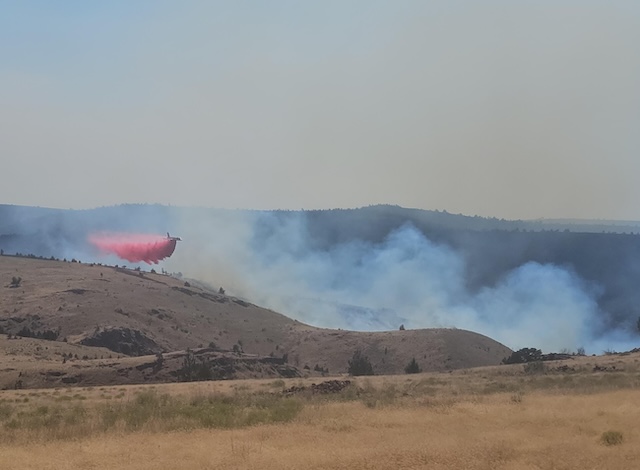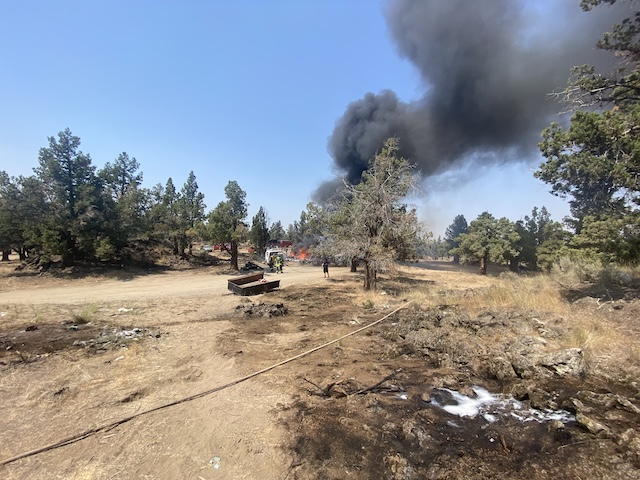Kenya through the eyes of the Maasai
Published 5:00 am Sunday, August 11, 2013
In the market town of Narok, Kenya, 90 miles west of Nairobi, I was buying a Kenyan SIM card for my cellphone when I heard someone behind me calling my name. He was wearing a bright red shuka, the traditional shawl of the Maasai people. Colorful beaded jewelry circled his neck, hung from his ears and ringed his wrists. At his waist, a short steel sword was sheathed in red leather. His feet were clad in sandals made from old tires.
“Salaton?” I asked.
Trending
“Yes! Welcome!” he said, adding, “I’ll wait for you outside.”
A Maasai chief, Salaton Ole Ntutu had come to take me to his village, Maji Moto, where he runs the Maji Moto Maasai Cultural Camp. There, visitors stay in his tribal community, learning about the ways of the Maasai and getting a feel for the landscape they live within. Although the camp is highly rated on TripAdvisor, I wasn’t really sure where the experience would fall on the spectrum between “farcically touristy” and “viscerally authentic” (which aren’t official review categories but perhaps should be). Before we even left Narok, I got my first indicator as Salaton loaded a brown and white ewe, which he had just bought at the market, into the taxi with us; liking the sheep’s looks, he had decided to add it to his flock.
The paved road turned to dirt, then became a muddy track as we cut across the Loita Plains. Herds of Thomson’s gazelles, wildebeests and zebras casually grazed on the lush carpet of grass that had sprouted during unusually heavy December rains, which were continuing into early January.
Reaching Maji Moto, I realized it was not a village in the classic sense of the word. Although there is a “town center” with a few basic dry-goods shops, a butcher, a grain mill and a tin shack of a pub serving warm Tusker (Kenya’s most popular beer), most Maasai in the area don’t live near it. Each family dwells in a manyatta — a small compound of stick-and-mud huts, with wooden pens for herds of cattle, sheep and goats, and no next-door neighbors. Maji Moto’s manyattas are spread out over miles of undeveloped semi-arid rangelands at the foot of the Loita Hills and are home to some 3,000 people.
Salaton’s camp is basically a manyatta of its own. For $100 a night, guests stay in mud huts that are simple but clean, with comfortable beds, mosquito nets and solar-powered lights — or, for $75, in Coleman tents with mattresses. Meals like stewed goat meat, fried potatoes, pasta, carrot salad and ugali (similar to polenta) are freshly cooked over charcoal or propane by a charming warrior named Sinti, who’s as good with a spatula as a spear (and the ritual scarring on his leg, earned when he helped kill a lion, is proof of his skill with the latter). The toilets are well-built outhouses, and showers are gravity-fed from tanks filled with water hauled up from the nearby hot spring that gives Maji Moto — “hot water” in Swahili — its name.
A cultural education
Trending
I stayed in and around Maji Moto for 10 days last winter (well before the State Department’s recent worldwide travel alert). Before three travelers from California arrived, the only other guests were two Kenyans who are collaborating with Salaton on a regional conservation project, trying to protect vast tracts of Maasai lands. Once communally owned, the area has recently been divvied up into private plots that individuals may sell to anyone, raising fears that they will be bought by commercial or industrial developers who do not have the best interests of the environment or the tribe in mind. Through our conversations about land rights issues, wildlife migrations, livestock grazing patterns and cultural traditions, I began to piece together an increasingly nuanced picture of the context into which I had landed.
And day by day, I saw more of the world of the Maasai of Maji Moto. There was the bustling weekly livestock market in the nearby town of Ewaso Nero where Maasai herders filled a dusty corral half as large as a football field with sheep, goats and cows, selling them mostly to meat merchants from Nairobi. I bathed in the Maji Moto hot springs with the locals and was led on guided hikes into the easily climbed Loita Hills, where it seemed as if everything that grew had some medicinal, nutritional or spiritual significance. The leaves of the sagelike compa bushes, for instance, are rubbed under the armpits like deodorant; twigs from the leafy olkisikongu tree are used as natural toothbrushes; and the sacred oreteti trees, under which the Maasai pray to their god, Enkai, are said to have the power to dispel bad energy and instill peace.
A couple of hundred yards behind the Cultural Camp is the “widows’ village.” In Maasai communities, women often outlive their husbands but are forbidden from remarrying. Some of these widows, and their children, are left destitute, with no livestock (the traditionally favored currency of the Maasai). Urged by his mother to address this problem, Salaton built a manyatta where poor widows live together like a family, earning money by working at the camp and selling beautifully beaded jewelry to tourists. The camp also pays for their and their children’s medical expenses. When I first went to their manyatta, the widows performed traditional welcoming songs and dances, but subsequent visits were less formal; they were happy to show me how they lived and were comfortable being photographed in their homes.
Meanwhile, I got to know the Maasai who were working and volunteering at Salaton’s camp, especially those who spoke English. There was Rose, a teenage seamstress with a hair-trigger smile, who teaches the widows how to sew when she isn’t working with tourists; Joyce, a college graduate in her early 20s recently hired to help Salaton with the business side of the camp; and Meeri, who was in her last year of high school in Maji Moto after fleeing her own village a few years earlier to escape a marriage her parents were arranging for her.
“I’d heard that the leader here helped girls like me,” she said, and described her three-day walk alone across the bush, sleeping in the branches of trees at night.
Our rapport was easy as we asked and answered questions about our cultures. Among our many conversations, we compared differences between Maasai and American marriages. When I explained that we don’t have dowries, don’t practice polygamy and get to choose our spouses, they liked the way all of that sounded. But they didn’t immediately embrace the idea that a wife might be older than her husband.
“That would never happen here,” Joyce said, laughing at the thought.
We also traded stories. They told me about the hyena and the hare — explaining how two creatures who were once close friends became eternal enemies after each deceived the other for his own gain — and I told them about the boy who cried wolf (which I changed to lion). They told me the tale of Oltatuanii, in which a Maasai woman saves her people from a murderous giant; I told them about Scheherazade.
Wildlife safari
Since Maji Moto is only about 35 miles from Masai Mara National Reserve — most famous for the huge wildebeest migration that covers 583 square miles of rolling savanna each summer — it would have been insane to miss it. Salaton would be my guide, but because he does not have any vehicles, he phoned some of his friends and negotiated for a two-day/one-night Land Cruiser safari with a Maasai driver, staying deep in the park at the Matira luxury tent camp (I paid 36,500 Kenya shillings, $438 at 83 shillings to the dollar, for everything except the $70 park entry fee).
It was a bonanza of wildlife. Seeing these animals truly move, not pace or sleep in a zoo enclosure, was a revelation. Once, we stopped to watch a cheetah with three cubs slinking through the grass in front of a family of elephants, as a warthog pranced off in the opposite direction, a hyena lurked to the south and groups of impalas grazed to the north; it was like a live version of the opening scene of “The Lion King.” I put down my camera. It was simply too magnificent, too moving, to want to experience through a viewfinder.
Before I left Maji Moto, I asked Salaton how he became chief. He said that Maasai medicine men have a vision and see which young boy in the community is meant to be a tribal leader. Then that boy must consume what he called “dangerous plants”; if he survives, he will be made chief.
“And if he doesn’t survive?” I asked.
“Then the elders were wrong,” he said.
“Oh,” I said, torn between conflicting impulses to judge and to understand with an open mind.
After 10 days in Maasai country, it was a feeling that had become quite familiar.








